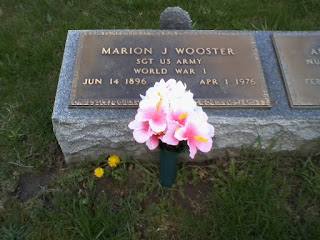From Randy Seaver: For this week's mission (should
you decide to accept it), I challenge you to:
1) Geneablogger
Diane Gould Hall posted WORKDAY
WEDNESDAY – What kind of work did your ancestors do? on
her Michigan Family Trails blog
last year, and I thought the topic could be used as an SNGF post.
2) Please go back several generations (say parents or grandparents or great-grandparents) and list the occupations that they had in the records you've found for them. You could do this, say, by ancestor table number.
2) Please go back several generations (say parents or grandparents or great-grandparents) and list the occupations that they had in the records you've found for them. You could do this, say, by ancestor table number.
 |
| A field overlooking Owasco Lake |
I wondered how to go about answering this Saturday
challenge. I can answer the question for most of my male ancestors with just
one word: “farmer”. My father left the farm, worked as a mechanic/tow truck
driver for a short time. Then worked for
his uncle for a while as a salesman for a Sinclair oil distributorship before
taking it over from him. He then ran this business as his own for the rest of
his working career, but was always a farmer at heart. My maternal grandfather was a carpenter by
trade, although in later years he also worked for the school district as a
janitor. The women for the most part were housewives, supporting their husbands
in their careers; especially those who were farm wives. My maternal grandmother
was a Registered Nurse. There is not much variety to write about.
Then I read a blog posting from Michael John Neill
where he took exception (and rightly so) to somebody saying that an ancestor was just a farmer.
That made me think about the fact many people may not realize what the
occupations of farmer and farmer’s wife entailed, and often still do today.
The farmer is the one that gets up while its still night to
milk the cows and feed all the animals. He may not have had much sleep, as he
had been in the barn just a short while before checking on an animal that was
sick or about to give birth. Maybe there were new baby animals of some sort to
tend to already that morning.
He is the one that gets all the crops planted while checking
the weather for storms and cold spells that will hurt the tender plants. Have
you ever watched a haying crew scramble to get the hay from the field on a hot
summer day when a storm is brewing? They are working at a frantic pace, but
organized and knowing exactly what to do.
I use the pronoun “he” above. However, not all farmers are
men. And did you notice what was happening right along side that farmer when
there was a crisis going on or any type of extra work needing to be done? Yes,
that is the farmer’s wife jumping in and helping where needed. When I posted a
picture of my grandparents’ barn a while ago, one comment was made by my older
brother about something that was missing from the scene. The ’48 IH pick-up
truck pulling up to the barn with a load of hay to be unloaded-- driven by
Grandma.
The farmer’s wife’s traditional sphere was the kitchen.
Getting meals on the table, washing the clothes and keeping the house.
Preserving the harvest for use next winter, mending clothes or sewing entirely
new outfits. All the time while keeping an eye on the children and making sure
they were safe. It was also helping and getting everything done that her
husband might not be able to get to. They were a team.
At other times a farmer is doing many other chores around
the farm. The job, if a written description were made, would go on for pages
and pages and scare any sane person away. The farmer is part veterinarian, part
butcher, part mechanic, part electrician, part carpenter, part meteorologist,
part business person, part bookkeeper, part salesman, part store clerk, part
horse-trader, part blacksmith, part cooper, part herbalist… part many more
things I have missed. Whatever needed to be done on the farm needed to be done
by him his wife or children, often at a moment’s notice, without a chance to
call for help unless it was to his nearest neighbor- another farm family.
So, yes most of my ancestors were “just farmers” and I’m
proud to say that I descend from many, many generations of farmers. None of the
current generations farm other than a small garden or such, but many of our
cousins still do.
































